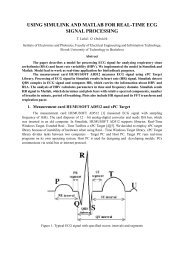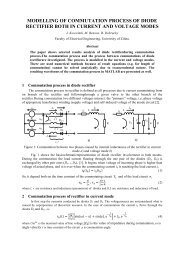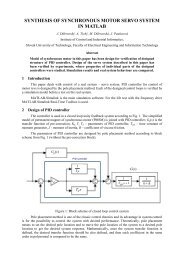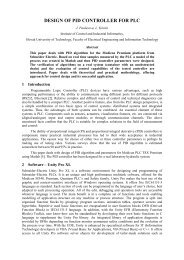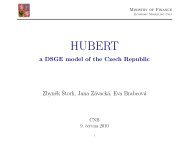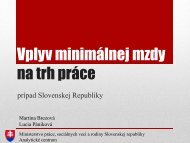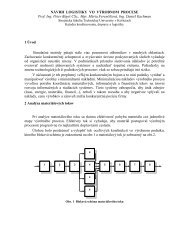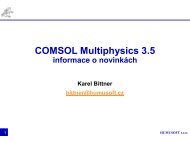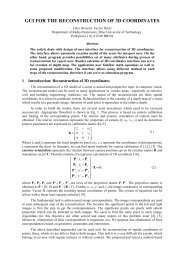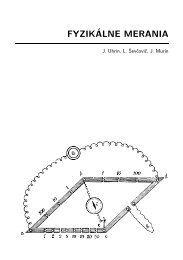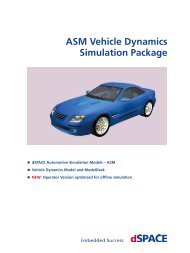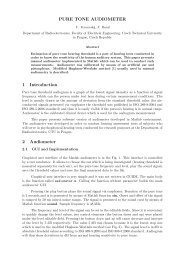Application of Comsol Multiphysics 3.2 to finite strain ... - Humusoft
Application of Comsol Multiphysics 3.2 to finite strain ... - Humusoft
Application of Comsol Multiphysics 3.2 to finite strain ... - Humusoft
You also want an ePaper? Increase the reach of your titles
YUMPU automatically turns print PDFs into web optimized ePapers that Google loves.
Holzapfel [3] and used by Holzapfel & Gasser [5] <strong>to</strong> calculate the viscoelastic deformation <strong>of</strong> fiberreinforced composite material undergoing <strong>finite</strong> <strong>strain</strong>s.The model is based on the theory <strong>of</strong> compressible hyperelasticity with the decoupledrepresentation <strong>of</strong> the Helmholtz free energy function with the internal variables (Holzapfel [1], p. 283) :C , 1,..... , m= ∞VOL J ∞ISOmC ∑ C , , C= J −2/3 C . (1)The first two terms in (1) characterize the equilibrium state and describe the volumetric elastic responseand the isochoric elastic response as t ∞ , respectively. The third term is the dissipative potentialresponsible for the viscoelastic contribution. The derivation <strong>of</strong> the 2 nd Piola-Kirchh<strong>of</strong>f stress withvolumetric and isochoric terms:∞S VOL∞S ISOS=2 ∂ C , 1 , ..... , m ∂C=1=S ∞VOLS ∞ISOm∑=1Q (2)where and is the volumetric and the isochoric stress response respectively and theoverstress Q is stress <strong>of</strong> 2 nd Piola-Kirchh<strong>of</strong>f type.S ∞ISOS ∞VOL=J d ∞VOLd J J C −1 ,=J −2/ 3 Dev [2 ∂ ∞ISO∂ CC ] ,Dev .=.−1/3[ .:C ]C −1 . (5)(3)(4)where Dev . is the devia<strong>to</strong>ric opera<strong>to</strong>r in the Lagrangian description. Motivated by the generalizedMaxwell rheological model (Fig. 1), the evolution equation for the internal variable Q takes on theform (6).Fig. 1. Maxwell rheological modelṠ ∞ISOQ˙ Q =Ṡ ISO,Ṡ ISO= ∞Ṡ ∞ ISOC ,whereC = ∂ S ∞ISO∂ C Ċ =C Ė ISOC ISO=2 ∂ S ∞ISO∞∂ C =2 ∂ S ISO∂C∂C∂C(6)(7)(8)(9) ∞ ∈0,∞ in the expression (7) is the nondimensional <strong>strain</strong> energy fac<strong>to</strong>r [2,4], is therelaxation time, C ISO is isochoric contribution <strong>of</strong> the tangent elasticity tensor and Ė is the material<strong>strain</strong> rate tensor



